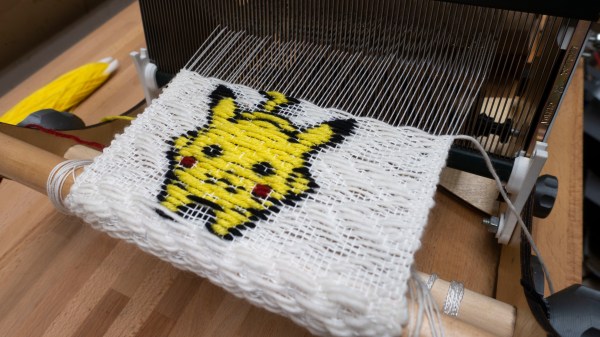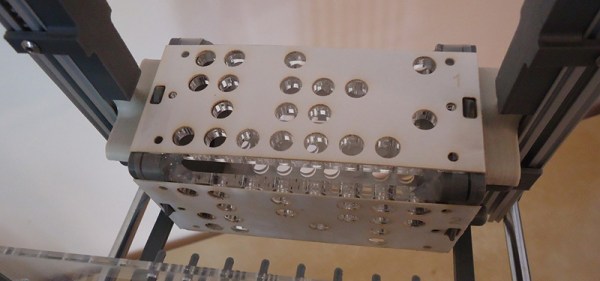The origin story of software takes us back past punch card computers and Babbage’s Difference Engine to a French weaver called Joseph Marie Jacquard. Jacquard created a way to automate mechanical looms, giving weavers the ability to change a loom’s pattern by simply switching punch cards. This invention not only made it possible to produce detailed fabrics in a vastly simplified way, it was an extremely important conceptual step in the development of computer programming, influencing Babbage’s development of the Analytical Engine amongst many other things.
So, when [Kurt] saw his son’s enthusiasm for weaving on a simple loom, he started thinking about how he could pay homage to the roots of software by designing and building an open source computer controlled loom. He knew this was going to be difficult: looms are complex machines with hundreds of small parts. [Kurt] wrestled with wonky carriage movements, cam jams, hook size disasters and plenty of magic smoke from motor control boards. After a year and a half of loom hacking he succeeded in making a 60 thread computer controlled loom, driven by an iPhone app using Bluetooth.
As well as writing up the story of this build on his blog, linked above, [Kurt] has also has made all of his design files, PCB layouts, firmware and code available on GitLab.
We’ve featured a few weaving hacks over the years, including this cheap, simple 3D printable loom and a Jacquard inspired bitmap display.
Fun, informative build video after the cut.
Continue reading “Open Source Computer Controlled Loom Weaves Pikachu For You”













